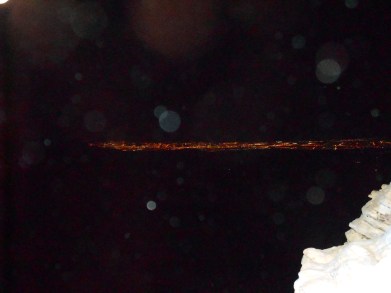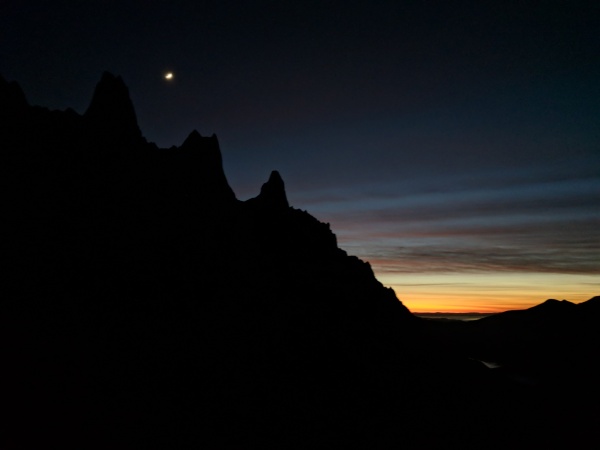Alpinism is a game of speed. Periods of good weather in the mountains are usually short, and climbing takes you past hazards like avalanche slopes, which are less dangerous the less time you spend under them. Going faster allows you to carry less food and gear, letting you climb even faster, and in a style that’s more fun than hauling a heavy bag.

On big mountains, most climbers eventually face the question of whether to climb a route in a single push, or stop along the way. For a given party, a route that takes less than 24 hours ‘in a push’ can sometimes take 3 days when hauling overnight gear.

But the single push can come with its own problems. ‘In a push’ can mean over 24 hours of continuous climbing and descending. If you keep moving, climbing at night is peaceful, beautiful, and fun. However, getting lost in the dark or pinned down by bad weather can force you to stop and wait, with little clothing to keep you comfortable. A night of fitful shivering can feel endless, and saps your will to continue climbing. Many climbers stoically endure or even take masochistic pride in these ‘shiver bivies’, but nobody thinks they’re fun.

A friend of mine and his partner once got caught in an intense storm with no bivy gear. In a wonderful bonding moment, he lovingly peed into his empty water bottle and let his partner hold it against his own body for warmth. The two guys made it down the next day, but grimmer stories exist of climbers who tried to go too fast and pushed the envelope too far. Sometimes it’s just more pleasant to plan ahead for a stop to rest, and enjoy the night in a remote place with the creature comfort of a warm sleeping bag.

Worlds away from such concerns, I’m sitting at home in Virginia recovering from Surgery 1, faced with the question of when to have Surgery 2. Should I stack the surgeries back to back, to return to climbing as soon as possible, or take a longer break between the surgeries to recover a bit of fitness and a bit of sanity?

To be clear, having the two surgeries on the same day was never an option I (or my surgeon) considered. Having both arms incapacitated would make it impossible for me to work and probably prolong the recovery. Meghan also wisely pointed out the ‘toilet problem’. The question was rather whether to give myself enough time after the first surgery to be active again, or have the second surgery as soon as the first arm is barely functional.

An important unknown is how well I’m actually recovering from the first surgery. The motions I’ve been allowed to make feel good most of the time, but I won’t be able to test out the movements that use my biceps and anterior labrum or another 4 weeks. Once I reach that stage I’ll decide quickly if I’m ready for the second surgery. If so, I should be able to get into the operating room a couple of weeks later.

After thinking about it, I’d rather have the second surgery sooner than later. This minimizes my time away from climbing, which is the ultimate reason for these surgeries. I think waiting for the second surgery would just test my patience, and I’m not sure what I can do with one semi-functional arm anyways. Also, since the first surgery went so well, I’m already able to get a bit of exercise in, and I don’t feel as stir-crazy as I thought I would. It’s still far away, but I can see the end of the tunnel.

It’s now been 2 weeks since my surgery. I have good days and bad days, but the pain is always tolerable. I went out for a short trail run yesterday and kept it up for about an hour, holding my left arm tight against my body to keep the load off by biceps. I don’t think I should do that a lot, but it was nice to get some proper exercise. I’m slowly adding in other exercises, including isometrics for the shoulder muscles that I’m not allowed to actually move yet. I’ll share some details, and more thoughts for climbers who are thinking about shoulder surgery, in the next post.
